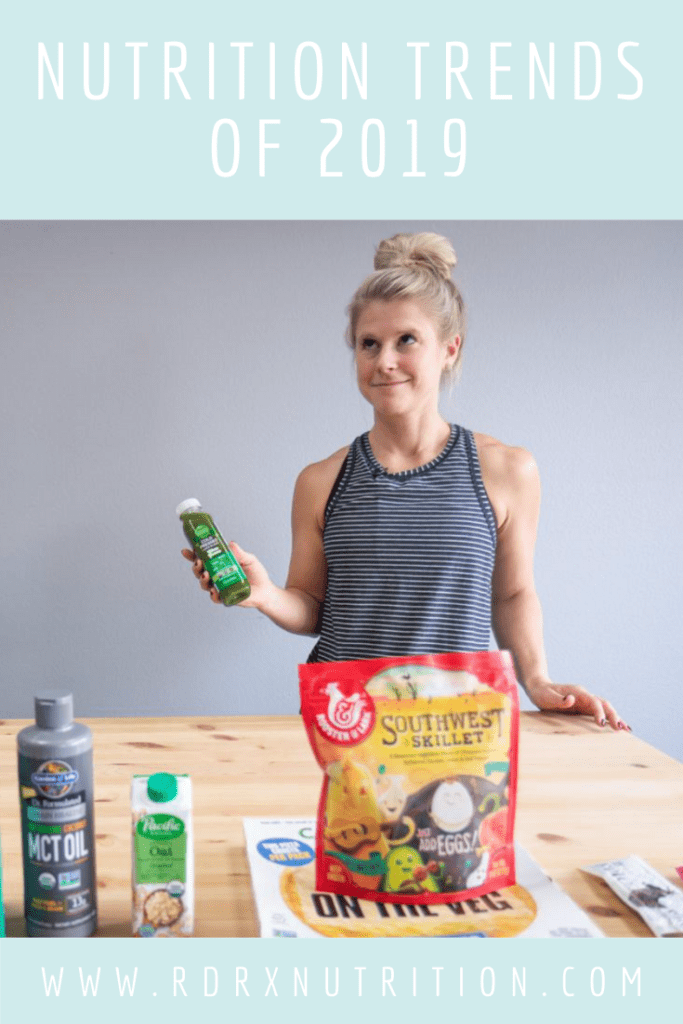Every year there is a new diet, new product, new supplement that is going to make you lose weight fast and wake up looking like Beyoncé. It’s hard to stay on top of it all. In this blog post I addressed the top 9 nutrition trends of 2019.
Pyramid Scheme Nutrition Products:
Just don’t. Glad we got that out of the way.
Bulletproof Coffee:
Dave Asprey calls his popular recipe “Bulletproof Coffee”, which contains three ingredients: unsalted grass-fed butter, Brain Octane oil (extracted from coconut and palm kernels), and coffee made with mold-free, lab-tested beans. He named it Bulletproof because “bulletproof” is the state of high performance where you take control of and improve your biochemistry, he says. That’s what biohackers do.
First of all, it’s high in calories. If you’d like to spend your saturated fat budget on butter coffee go ahead but it’s not going to get you a six-pack or make you smarter.
Asprey’s theory is that the fat content of his concoction not only turns off hunger cravings but also shifts the bacteria in your gut so you have more of the kind that’s found in thin people and less of the variety found in the obese.
Yes, having a higher fat beverage or breakfast may keep you full longer but it doesn’t exactly rev up your metabolism. Calories still count when you are drinking them. I would recommend having a filling balanced breakfast. You are missing out on fiber, protein and other micronutrients!

Cauliflower:
First kale was the superfood, then avocados and now it’s plain ol cauliflower! This veggie is literally everywhere! From pizza, to pasta, to rice to mashed potatoes, it’s making an appearance everywhere.
I was against it at first only because I think plain cauliflower is gross (just my preference). Cauliflower is certainly is a nutrient dense vegetable to include in your diet. After branching out and trying some new variations, I am hooked.
Just don’t be fooled by silly products that have false advertising. If it’s covered in processed sauces and ingredients or hardly on the list of ingredients, take a better look at what other options there are.

Oatmilk:
Oatmilk is fairly comparable to almond milk. Oatly oat milk contains 2 grams of protein and 5 grams of fat, while many almond milk brands contain 1 gram of protein and 2.5 grams of fat. Since oat milk is made from a carbohydrate, it also contains more sugar than other milks. Like almond milk and cow’s milk, commercial oat milk brands are typically enriched with vitamins and minerals like calcium, vitamin B12, phosphorus, and vitamin D.

Celery Juice:
Celery juice is trending online and on social media, literally touted as a miracle cure. The originator of this trend is Anthony William, aka the “Medical Medium” who gets his nutrition information from spirits…give me a break. William wrote, “I believe that celery juice is a miracle juice and that it’s one of the greatest healing tonics of all time. I’ve seen thousands of people who suffer from chronic and mystery illnesses restore their health by drinking 16 oz of celery juice daily on an empty stomach.” K, where is the science?
While some research has found anti-inflammatory and possibly anticancer benefits from isolated phytochemicals found in celery, there’s no research supporting any of the popular claims about celery juice.
I encourage eating vegetables in their whole state to get the fiber benefits but if you like drinking them that is okay too just know that you are missing out on some other nutrients and may need to pair with other food sources to help keep you full.

Kombucha:
Fermented foods and beverages contain gut-friendly bacteria or probiotics that aid in digestion and boost one’s immune system. Unfortunately, with kombucha we just don’t have enough research to truly claim all it’s predicted health benefits. There is a lot of great research for tea health benefits and if you enjoy it, go for it just don’t expect it to heal your gut or boost immunity. Yogurt, fermented veggies, certain cheeses and kefir are also sources of probiotics.

Pre-Cut, Spiralized and Riced Veggies:
LOVE. Give me all the riced cauliflower, zoodles and pre-chopped frozen veggies. The texture is amazing and makes vegetables so much more fun. They still contain all the same nutrition value and if you’re more likely to eat them this way it,s worth buying the spirializer or the cost of pre-cut.

Whole Food Bars:
My two favorites are Epic and Rx Bars. Yes, they are processed, I know. Let’s be real we all need emergency snacks and portable food options. These two brands do a great job using whole food ingredients and making them nutrient dense. Just remember depending on what your goals are the bars can be a little higher in calories. Another downside would be cost, they can be a little pricey and obviously a balanced meal would be more satisfying.

Collagen:
First, let’s get things straight–I promote a diet high in nonstarchy vegetables, lean protein, healthy fats and complex carbs. But what are the benefits of collagen?
Collagen may be beneficial to a healthy diet because it is a no added sugar/fat protein source, may promote skin elasticity, hair and nail growth and reduce inflammation.

Want to learn more about collagen:
Review of the Top 9 Nutrition Trends of 2019
Hope you enjoyed this year’s review of the top 9 nutrition trends of 2019. Leave a comment and let me know what you think!
